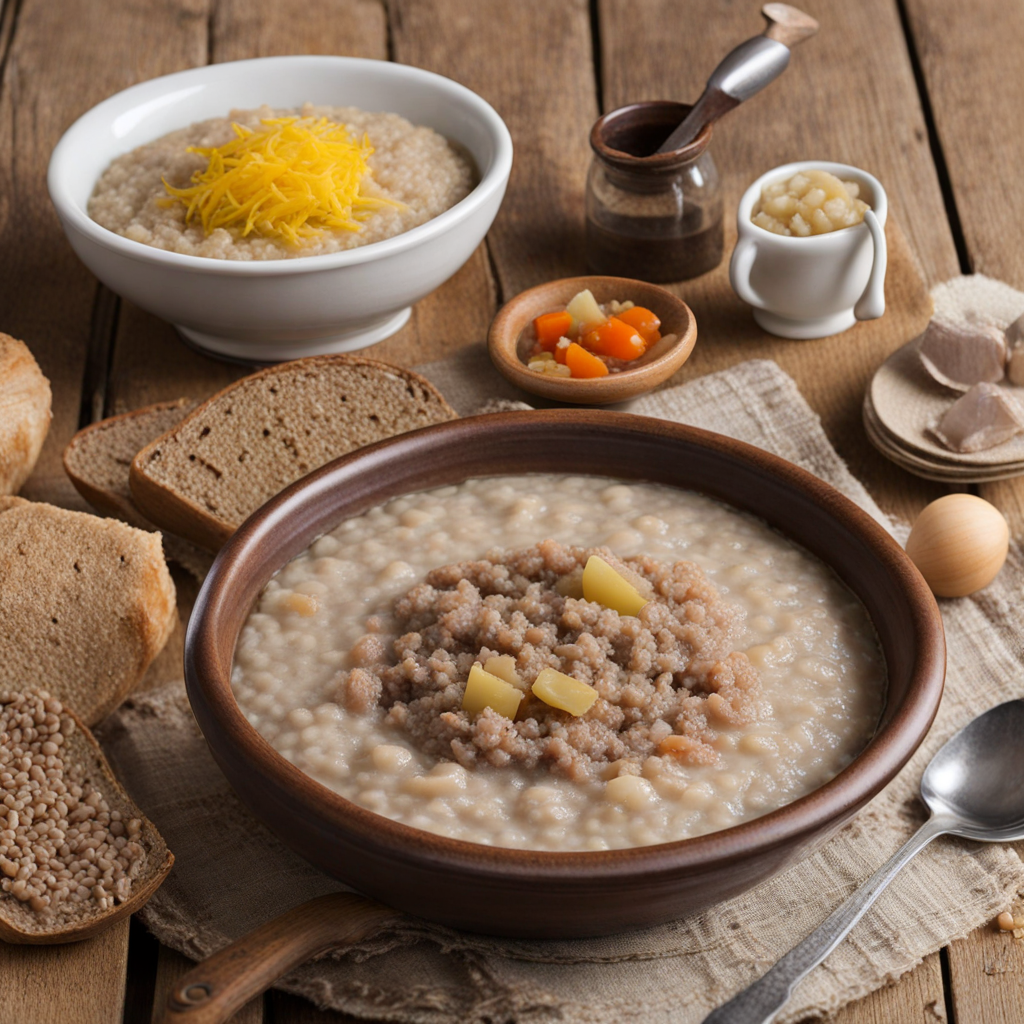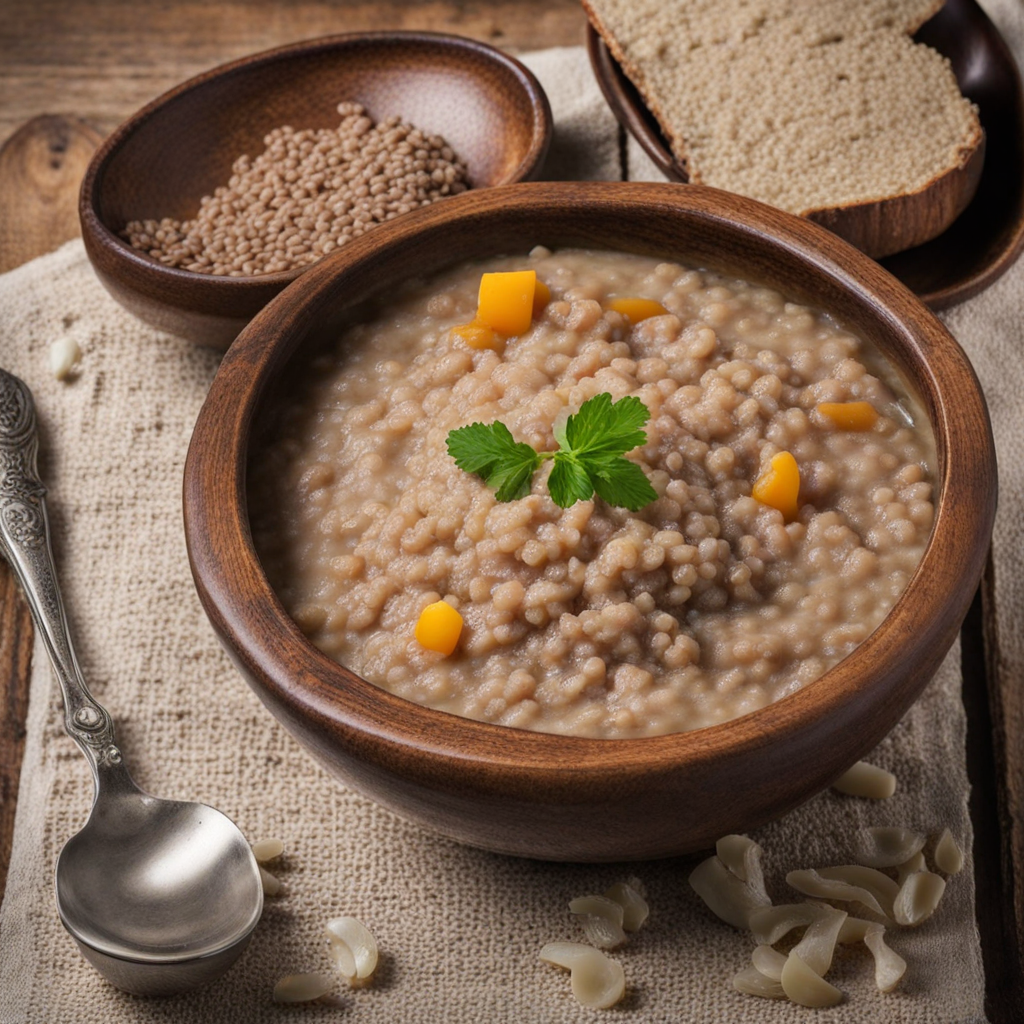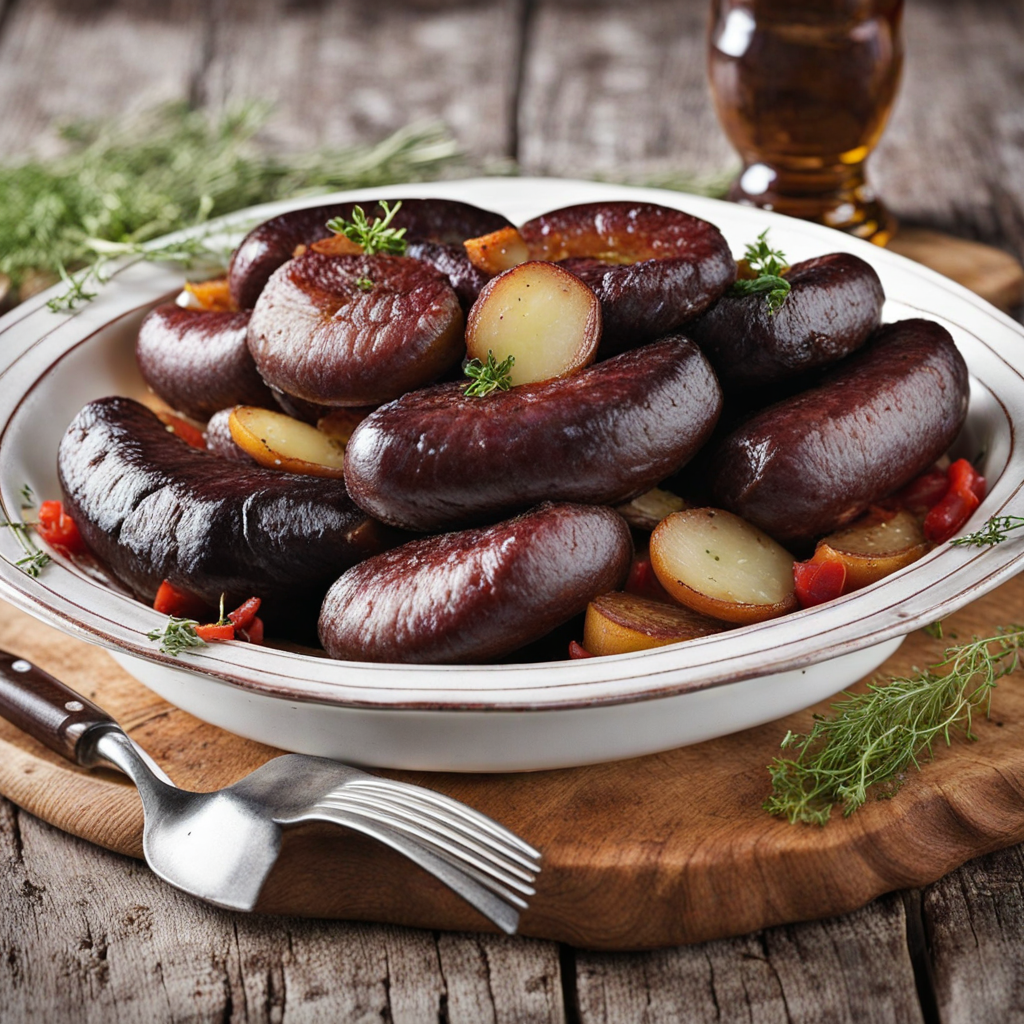Heidensterz
Heidensterz is a traditional Austrian dish that embodies the rustic charm and hearty flavors of the Alpine regions. This dish is primarily made from coarsely ground grains, often buckwheat or barley, which are cooked in water or milk until they reach a thick, porridge-like consistency. The grains impart a nutty flavor that is both satisfying and wholesome, making it a comforting option for breakfast or as a side dish. Often, it is sweetened with honey or served with a sprinkle of sugar, adding a delightful balance to the earthiness of the grains. To enhance its flavor profile, Heidensterz is frequently enriched with additional ingredients such as fruits, nuts, or spices. Apples and pears are commonly used, providing a fruity contrast to the grainy base. Nuts like walnuts or hazelnuts can add a delightful crunch, while spices such as cinnamon or vanilla lend warmth and depth to the dish. The combination of textures and flavors makes each bite an exploration of the simple yet rich culinary traditions of Austria. Heidensterz is typically served warm, and it can be enjoyed straight from the pot or plated elegantly to showcase its rustic appeal. It's not just a meal; it's an experience that connects you to the natural beauty and agricultural heritage of the Austrian countryside. Whether you savor it as a fulfilling breakfast or as a comforting side during dinner, Heidensterz is a dish that invites you to slow down and appreciate the wholesome ingredients that come together to create a taste of Austrian tradition.
How It Became This Dish
Heidensterz: A Culinary Journey Through Austrian History Heidensterz, often referred to as “Heidensterz,” is a traditional dish originating from the alpine regions of Austria. It is a hearty, rustic meal made primarily from buckwheat flour, water, and salt, sometimes enriched with milk or egg. The dish is typically prepared as a porridge or a thick pancake, and it has been a staple food for centuries, especially among rural communities in the Austrian Alps. To fully appreciate Heidensterz, we must delve into its origins, cultural significance, and its evolution over time. Origins: The Birth of Heidensterz The roots of Heidensterz can be traced back to the medieval period in Austria, particularly within the Tyrolean and Salzburg regions. The term “Heidensterz” itself derives from the German word “Heide,” which refers to heath or moorland—land that was often inhospitable for traditional agriculture. In these areas, the cultivation of wheat was challenging due to the harsh climate and rocky soil. As a result, local farmers turned to hardier grains like barley and buckwheat, which thrived in poor conditions. Buckwheat, a pseudocereal, was cultivated in Europe since the Middle Ages and became a cornerstone of the peasant diet. It is rich in nutrients and gluten-free, making it an ideal food for those who could not afford the luxury of wheat. Heidensterz was born out of necessity, providing an affordable and sustaining meal that could be easily prepared and consumed by families working long hours in the fields or mines. Cultural Significance: Food of the People Heidensterz quickly became more than just a meal; it evolved into a symbol of regional identity and resilience. For the rural population of the Austrian Alps, Heidensterz was not merely sustenance—it was a reflection of their connection to the land and their history. The dish was often served during communal gatherings and festivities, reinforcing social bonds among families and neighbors. In many households, Heidensterz was prepared in a communal pot and served directly from it. This tradition fostered a sense of unity and shared experience. It was often accompanied by a variety of toppings, such as applesauce, fruit compotes, or even savory options like sauerkraut or bacon, showcasing the versatility of the dish. Moreover, Heidensterz found its place in local folklore and traditions. It was often associated with harvest celebrations and community feasts, where families would come together to give thanks for the bounty of the land. The dish is also mentioned in folk songs and stories, illustrating its importance in the cultural fabric of Austrian life. Development Over Time: From Peasant Food to Culinary Revival As Austria underwent significant changes in the 19th and 20th centuries, the status of Heidensterz began to shift. The Industrial Revolution and subsequent urbanization saw many rural inhabitants migrate to cities in search of work, leading to a decline in traditional food practices. Heidensterz, once a staple of alpine life, became less common in urban diets. However, as the 20th century progressed, there was a growing interest in regional and traditional foods, particularly in the wake of the slow food movement in the 1980s and 1990s. Chefs and food enthusiasts began to rediscover and celebrate the culinary heritage of Austria, including dishes like Heidensterz. This revival was fueled by a desire for authenticity and a connection to local ingredients and traditions. Culinary schools and restaurants started to incorporate Heidensterz into their menus, often reinterpreting the classic dish with modern twists. Chefs experimented with different cooking techniques, additional ingredients, and plating styles, thus elevating Heidensterz from peasant food to a gourmet experience. This resurgence highlighted the adaptability of Heidensterz, showcasing its ability to transcend its humble origins while still honoring its roots. Contemporary Significance: A Dish for All Seasons Today, Heidensterz is celebrated as a traditional Austrian dish that appeals to both locals and tourists alike. Many alpine inns and restaurants feature Heidensterz prominently on their menus, often as a breakfast option or a comforting meal after a day spent hiking or skiing in the majestic mountains. The dish is not only nutritious but also embodies the spirit of communal dining, evoking memories of shared meals and gatherings. In modern culinary practices, Heidensterz is often made with organic buckwheat flour, reflecting the trend toward sustainable and health-conscious eating. Some variations might include additional ingredients such as nuts, seeds, or herbs, allowing for creative interpretations while still paying homage to the traditional preparation methods. This adaptability ensures that Heidensterz remains relevant and appealing to contemporary palates. Furthermore, the dish has gained recognition beyond Austria’s borders. As global interest in authentic regional cuisines grows, Heidensterz is finding its way onto menus in restaurants worldwide, introduced as a unique offering that tells the story of Austria's agrarian past and cultural heritage. Conclusion: A Taste of History Heidensterz is more than just a dish; it is a culinary artifact that encapsulates the struggles and triumphs of the Austrian people throughout history. From its origins in the rugged alpine regions to its revival in modern gastronomy, Heidensterz reflects the adaptability and resilience of traditional foods in an ever-changing world. As we take a bite of this hearty dish, we not only savor its flavor but also partake in a rich tapestry of history and culture that continues to evolve. Whether enjoyed in a rustic alpine hut or a trendy urban café, Heidensterz remains a timeless testament to the enduring connection between food, community, and identity in Austria.
You may like
Discover local flavors from Austria







